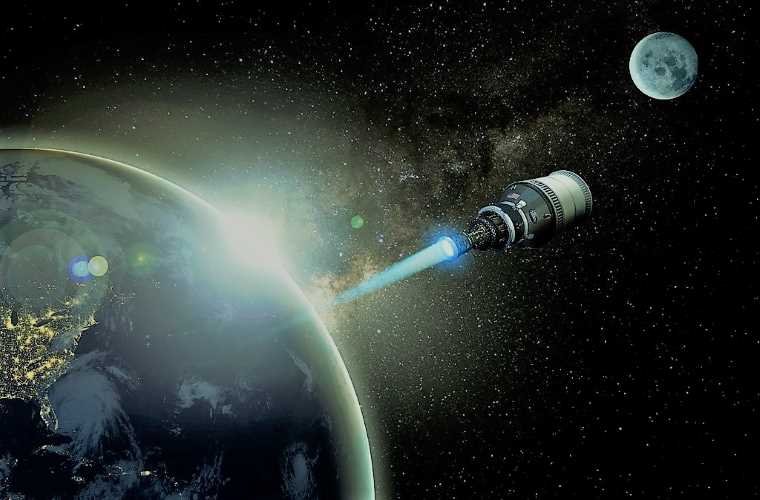The Defense Advanced Research Projects Agency (DARPA) recently awarded a $22 million contract to San Diego-based General Atomics to design a mini nuclear reactor for space propulsion.
Background: Why Nuclear Propulsion?
DRACO, which stands for “demonstration rocket for agile cislunar operations,” is a novel propulsion program that uses a small nuclear reactor to heat rocket fuel. The increased heat and energy produced via nuclear power allow the rocket fuel to be burned much more efficiently and still achieve very high thrust-to-weight ratios.
General Atomics, which has had a hand in nuclear space travel since the mid-twentieth century, will use the DRACO program to prove that nuclear power in space travel is effective and safe.
NASA explored forms of nuclear propulsion for space travel in the 1960s, but the technology and the risks were too high. Ultimately, they abandoned the projects. However, with renewed interest in getting to the moon and to Mars, nuclear propulsion seems to be back on the table.
ANALYSIS: Is Nuclear Propulsion Better Than Conventional Propulsion?
Christina Back, a vice president at General Atomics, said in a statement that nuclear thermal propulsion is a “leap ahead of conventional propulsion technology and will enable spacecraft to travel immense distances quickly.”
Moreover, DARPA’s interest lies in ensuring the United States and its allies remain on the leading edge of space exploration and control of cislunar space (which is the space between Earth and the Moon).
Herein lies the crucial part of the strategy: those who can move around the quickest and most efficiently control the space domain.
Chemical rockets can accelerate quickly, but they burn fuel quickly. Ion engines can run for ages, but they take time to build up speed. Until more exotic propulsion technology becomes feasible, nuclear-powered systems may be our best bet in the short term.
That being said, significant technical hurdles still exist, and most experts say that NASA, nor anyone, will have a working nuclear propulsion system before 2040.
In the case of DRACO, which aims to test its new system in 2025, the progam’s mission is to demonstrate a working nuclear thermal propulsion system in Earth’s orbit. The propulsion system will heat propellant to an extreme temperature. The system will then blast that propellant out a small nozzle and produce thrust.
While the science is still behind a bit, DARPA will not be the only organization watching this new project.
“There is once again recognition that nuclear thermal propulsion is a viable and powerful option to explore Mars and other destinations,” NASA recently stated in a press release.
OUTLOOK: This Is The Best We Can Do…For now
Anytime the world nuclear is used, people think of the worst-case scenario. Russian nuclear-powered satellites have fallen to Earth, causing radioactive contamination after all. However, if humanity’s destiny does lie in the stars, conventional chemical propulsion will not get us there.
While emerging science is beginning to look at various novel systems, like plasma, the near-term goals for space travel and space security cannot wait for a half-century of research and development.
If nuclear systems allow for more versatility in space missions and are more efficient, they may be worth the risk. Sometimes you need to hold the dragon by the tail and see what happens.
Follow and connect with MJ Banias on Twitter: @mjbanias
Don’t forget to follow us on Twitter, Facebook, and Instagram, to weigh in and share your thoughts. You can also get all the latest news and exciting feature content from The Debrief on Flipboard, and Pinterest. And subscribe to The Debrief YouTube Channel to check out all of The Debrief’s exciting original shows: The Official Debrief Podcast with Michael Mataluni– DEBRIEFED: Digging Deeper with Cristina Gomez –Rebelliously Curious with Chrissy Newton

